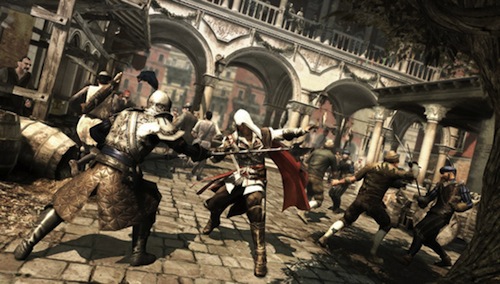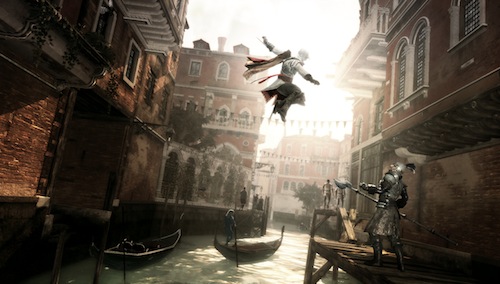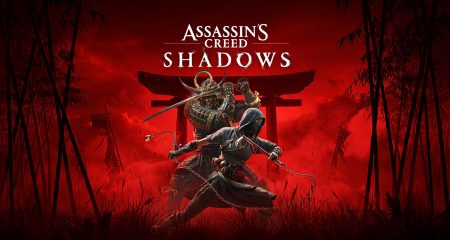Few games this console generation have been as divisive among critics and gamers as Assassin’s Creed from Ubisoft’s Montreal studio. Depending on which side of the fence you sit on, the 2007 game is either a repetitive and pretentious snore-fest or a stylish, immersive title that proves big-budget games can be both innovative and artistic.
Despite its mixed reception, Assassin’s Creed went on to sell more than 8m copies, which made a sequel inevitable. Though the critical consensus is that the sequel fixes most of the first game’s flaws, Assassin’s Creed 2 is every bit as idiosyncratic as Assassin’s Creed was. The treat for fans of the first game — I am one — is that the sequel improves on the first in every way while keeping its soul completely intact.
What makes the game even more remarkable is that it was made by a team of more than 450 people working for one of the world’s largest videogame publishers. As an intelligent risk-taker that is in business as much for art as for commerce, it wouldn’t be a stretch to see Ubisoft Montreal as videogaming’s answer to Disney’s Miramax and Pixar studios.
Assassin’s Creed 2 picks up where the first game left off. Once again, you take up the role of Desmond Miles, a bartender who discovers he’s a descendent of a line of assassins. (Miles is played by Uncharted’s Nolan North, who seems to have voiced more videogames than Michael Caine has made movies).
The assassins are embroiled in a desperate race with a shadowy organisation, the Knights Templar, to recover long-lost artifacts called “Pieces of Eden” that give the possessor the power to change the course of history.
In the first game, Miles was strapped into a machine called the Animus, which allowed him to tap into his genetic memory bank and relive the exploits of his ancestor, Altaïr, a Third Crusades-era assassin who played a vital role in recovering a Piece of Eden in his own lifetime.
This time, Miles is strapped into the Animus to experience the life of another ancestor — a young Florentine nobleman named Ezio Auditore living in the late 1400s. Ezio is a more complex and sympathetic character than Altaïr, first a carefree and impetuous youth, then a vengeful angel of death and finally a stoic champion of righteousness.
With its scheming elites and city-state rivalries, Renaissance Italy is a fertile setting for a story of betrayal, revenge and conspiracy. Assassin’s Creed 2 weaves historical figures into its narrative, depicting events like the Pazzi plot against the Medici family as part of the centuries-old conflict between the Knights Templar and the assassins.
Leonardo da Vinci makes an appearance as a Renaissance answer to James Bond’s Q, who supplies Ezio with weapons and gadgets. In a neat touch, the Animus database contains a number of factual entries about the buildings and people Ezio encounters during the game.
So far, so Dan Brown — though Assassin’s Creed 2 doesn’t take itself overly seriously, despite the epic sweep of its narrative. There are some moments where the game playfully tears down the fourth wall, in much the same way as Hideo Kojima’s Metal Gear games do. Jokes abound, including a character that introduces himself with the immortal words of Nintendo’s beloved plumber, “It’s a-me! Mario.”
As before, the gameplay splices together DNA from predecessors as different as Hitman, Prince of Persia, the Zelda games and Grand Theft Auto. The fact that you’re playing a character who is himself taking part in a simulation provides a handy explanation for computer game artifacts like glowing objective markers and health bars. It’s all very meta, though some people find it jarring rather than clever.
The amount and depth of content Assassin’s Creed 2 offers is staggering. After a slow start where the game introduces its mechanics one by one, it opens out into a massive go-anywhere, do-anything free-roamer. Hours into the game, you’re still only scratching its surface. Assassin’s Creed 2 packs in about 200 missions and side quests, which sprawl across Italian cities and towns such as San Gimignano, Venice, Florence and Forli as well as the Tuscan countryside.
To complete the story, you simply need to play about half of the missions, many of which involve assassinating Knights Templar. But in addition to that, you can hunt for collectibles like feathers and treasure chests, take part in rooftop races, accept freelance assassination contracts, invest money in upgrading your villa so that it produces more income for you, and beat up errant husbands for ill-treated wives.
Many of these tasks are quick diversions, but there are also meaty side projects to engage in. One of the most satisfying is a classic Prince of Persia-style puzzle-solving and platforming quest that sees Ezio explore the tombs of late assassins to find the seals he needs to unlock a vault housing Altaïr’s powerful armour. Another finds you completing some basic visual and logic puzzles to unlock video fragments that piece together to give a vital insight into the world of Assassin’s Creed.
The simplest and greatest pleasure that the game offers, however, is simply wandering around its beautifully realised recreation of Renaissance Italy. Landmarks like the Grand Canal, Santa Maria del Fiore, St Mark’s Basilica, Ponte Vecchio and Palazzo Vecchio are all modelled in the game with stunning accuracy; even better, you can climb any building to get a bird’s eye view of the Venetian harbour or Florence’s skyline. Apart from giving you a stunning view, summiting one of the designated viewpoints fills your map with details about mission and store locations.
Since you can upgrade Ezio’s health, equipment and weapons or access a wealth of backstory, the rewards for the side-missions are meaningful and satisfying in the wider context of the game — something that could not be side for the flag-hunting in Assassin’s Creed. And the sequel’s structure is far looser and less predictable than its predecessor, meaning it can no longer be accused of feeling repetitive.
The tools and options you have at your disposal to complete your tasks and missions have also been vastly expanded since the first game. If you want to avoid direct conflict, you can hire thieves or courtesans to lure guards away from the area you’re trying to access, pay some mercenaries to attack them, or blend in with the crowds on the street.
Combat is often unavoidable, but fighting is a richer and deeper experience than it was in the first game. In addition to Altaïr’s dodges, counters and basic strikes, Ezio can also pull off some new tricks like grabbing an enemy’s weapon and turning it back on him.
He can also use smoke bombs as a diversion, lace his wrist blade with poison, get his hands on a small firearm, and use a wider variety of primary weapons such as axes, maces and hammers. Though one doesn’t need to use all of these options, the game becomes more fun when you do.
Like the Ubisoft Montreal’s Prince of Persia reboot and Far Cry 2, Assassin’s Creed 2 demands that you meet it halfway. You need to leave behind your normal videogame terms of reference and live in Assassin Creed’s world by its rules.
It asks you to step back and enjoy its scenic vistas, its throwaway jokes and disposable missions, and the breadcrumb trails that lead you from collectible to collectible. It doesn’t want you to rush madly from objective to objective. Those that play it like a traditional sneak-em-up or beat-em-up may get bored and frustrated.
Ubisoft Montreal hasn’t fixed all the faults the haters found with the first game. There are moments where I can understand why many people dislike the series — the times when the enemy artificial intelligence is glitchy or outright stupid, the instances where Ezio won’t do what he’s told because of Ubisoft Montreal’s habit of mapping multiple commands to one button, and the occasions when the character animations don’t quite live up to the gorgeous environmental visuals.
But the moments where Assassin’s Creed 2 transcends these flaws and soars like the eagles that circle its bell-towers and spires are far more abundant. Scaling Giotto’s Campanile in Assassin’s Creed 2 to take in a moonlit view of Florence sprawling across the Arno is the next best thing to doing it in real life.
And unlike real life, you can swan dive from the summit, safely land in a bail of hay, and then bring a scheming Knight Templar to justice. All that the game asks in return is that you go along with the illusion. — Lance Harris, TechCentral
- Reviewed on Xbox 360. Also available on PlayStation 3; Windows PC version to ship in 2010





